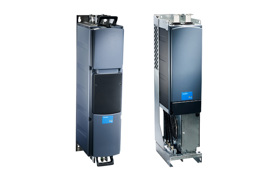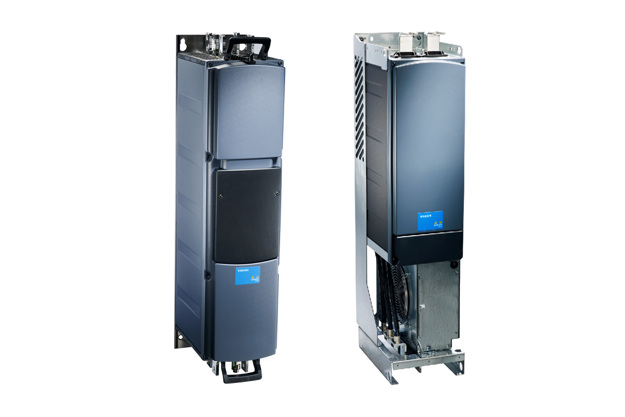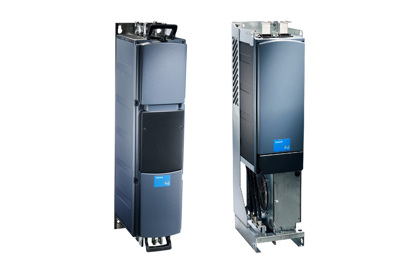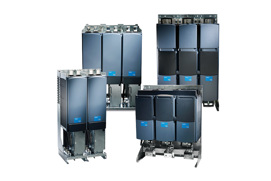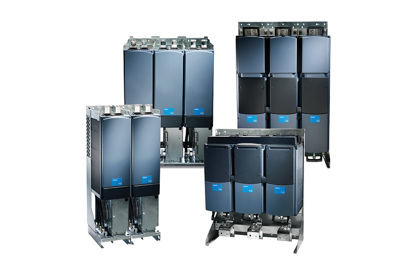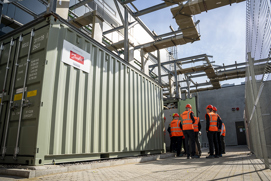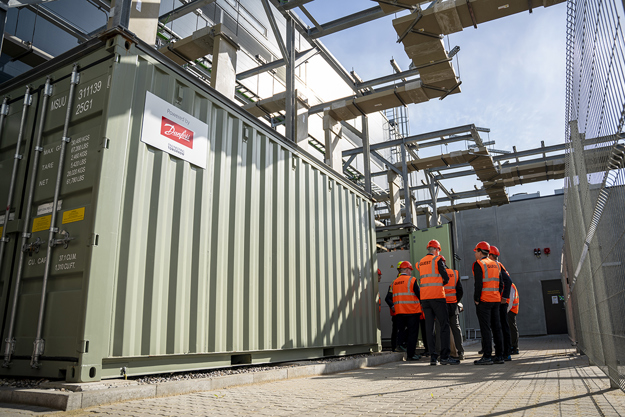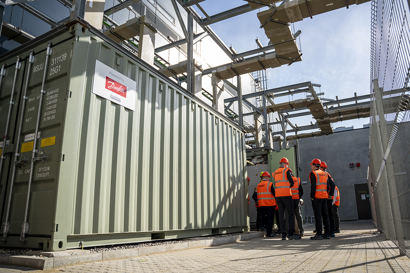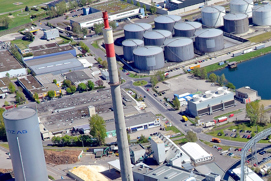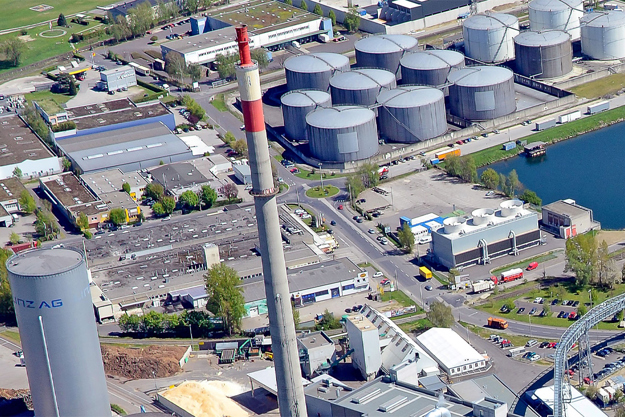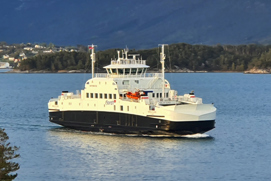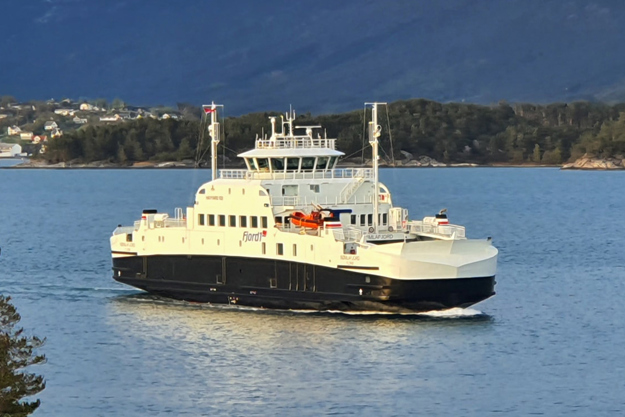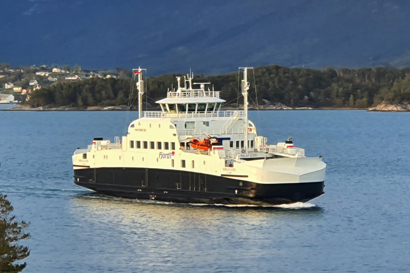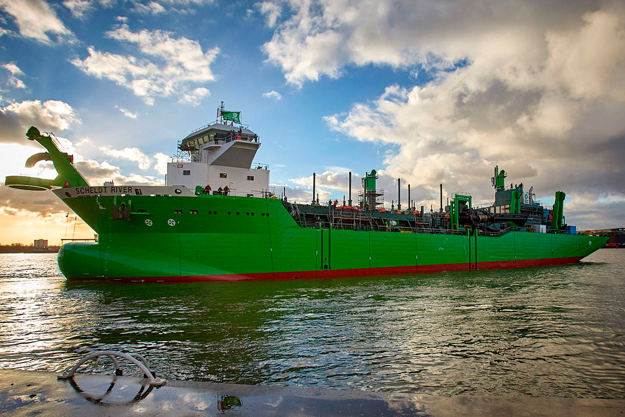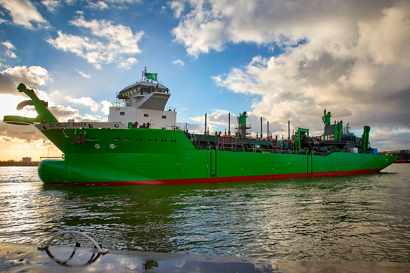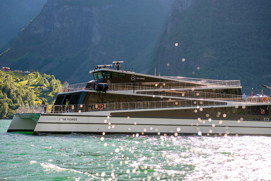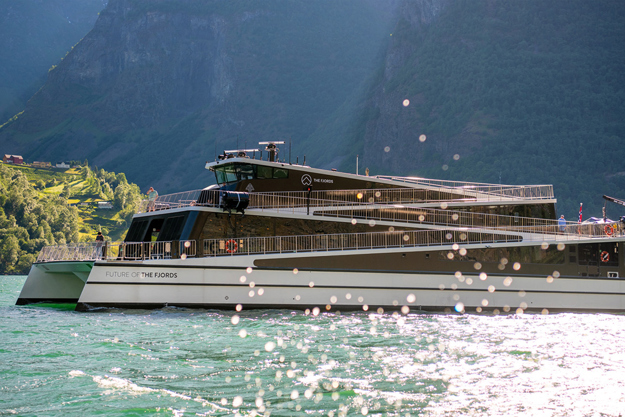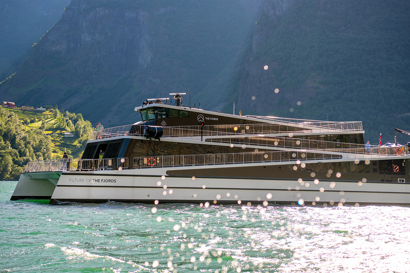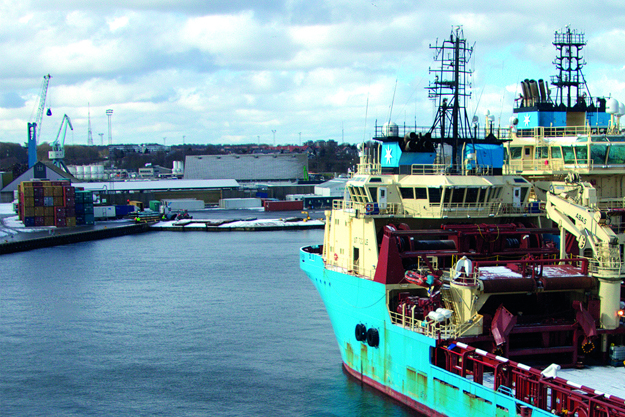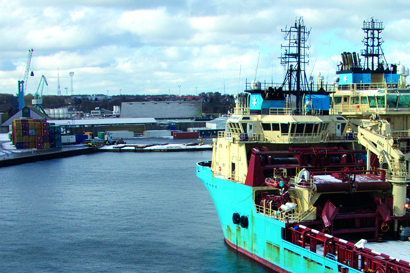NORWAY: The Hareid-Sulesund ferry operations have reduced CO2 emissions by 7000 tonnes annually with the introduction of electric vessels. In transitioning ferries from diesel to pure electric power, powerful onshore support is essential, in the form of reliable infrastructure for rapid charging capacity and stable grid supply. The systems on board and on shore act as a single system – a sophisticated and competitive system developed by Norwegian Electric Systems (NES) using Danfoss technology.

Charging 5MW in just six minutes
The electric ferry “Suloey” is about to dock at Hareid ferry terminal. The crossing from Sulesund has been made in strong headwind, with high electricity consumption during the crossing. Below decks, the electric ferry “Suloey” is equipped with propulsion, automation and charging systems from Norwegian Electric Systems (NES). “There is a need for proper charging after such a trip”, explains the captain of “Suloey”.
With a simple touch on the charging display, the fully-automated charging tower on shore connects to the ferry within a few seconds. Charging power close to five million watts ensures that the batteries on board are rapidly recharged.
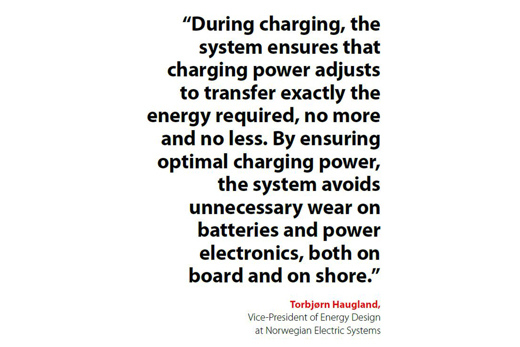
After 6 minutes, the charging system disconnects and “Suloey” sets course over to Sulesund again. Suloey, together with her sister ferries Hadaroey and Giskoey, currently makes an important contribution to reducing maritime emissions. The transition from diesel-driven to all-electric ferries on the Hareid- Sulesund crossing ensures annual reduction in CO2 emissions by as much as 7,000 tonnes, based on 32,000 vessel charging sessions every year.
Calculations at both ferry terminals showed that the existing power grid required extra power to achieve the necessary charging power. NES strengthened the power grid on both sides, and retrofitted vessels with batteries and the newest converter and power control technology, for the optimal electric-powered solution.

The solution
NES and Danfoss have the answers to all these engineering challenges. Håvard Wolden from Danfoss explains: “The electric ferry charges 350 kWh of power in just 6 minutes. This scale of charging places stringent demands upon the smart grid onshore in Hareid and Sulesund, which supports reliable power supply for the electric vessel rapid charging system.
NES supplemented the onshore power supply with battery storage systems powered by Danfoss grid converters, to ensure adequate charging capacity and speed. The electricity used to supply the system is supplied from renewable sources, to minimize losses and optimize operating costs.“
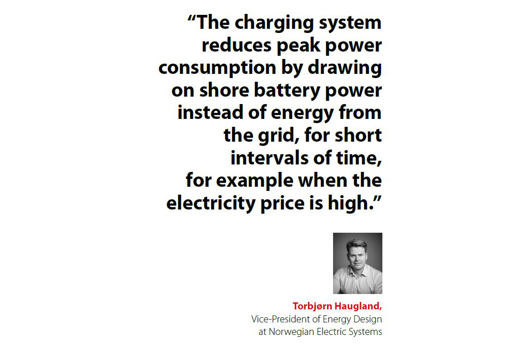
Stabilizing voltage by feeding reactive power back to the grid
The charging stations at Hareid and Sulesund are operated by Norway’s largest ferry company, Fjord1. The charging system is based on the latest power conversion and transmission technology, developed by NES.
Onshore: The grid system is based on NES-built energy storage systems using VACON® NXP Grid Converter. During charging, the vessel accumulates 5 MW power, comprising 3 MW from the local AC grid and 2 MW from the combined power of onshore batteries.

On board: VACON® NXP Grid Converter in the machine room converts the shore AC-voltage to stable DC-voltage on board. A VACON® NXP DC/DC Converter charges the batteries from the onboard DC-grid.
NES supports the crew by remotely monitoring performance from Bergen, providing technical support if challenges arise. Operational data feeds continuously to a cloud-based solution, supplying the ferry operator Fjord 1 with a full overview of electricity consumption and operational performance.
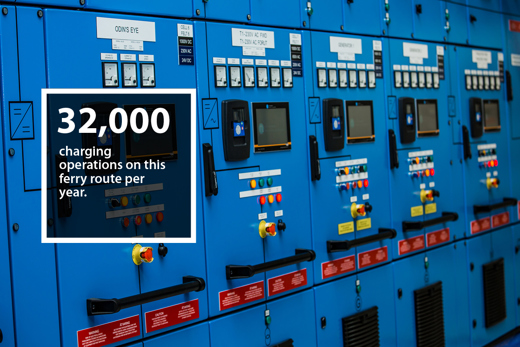
The outcome
In total, the charging stations on this ferry route perform about 32,000 charging operations and transfer approximately 11200 MWh of electric power per year.
The systems on board and on shore are fully integrated. When the ferry approaches the charging station, information about the energy consumed on the trip is communicated to the shore station. The system also checks the power grid and compensates to ensure no voltage disturbances arise. The charging system is designed to minimize voltage disturbances, feeding reactive power back to the grid during charging to maintain stable grid voltage. This in turn enables the local grid to deliver even more energy during charging of the vessel.
By actively controlling, monitoring, and supporting the grid from local batteries on shore side, the system supplies the high peak power crucial to rapid charging, with no need to scale up grid infrastructure. Instead of extra capital investment, the system relies on peak shaving functionality.
Peak shaving optimizes the energy flow between the incoming supply and local onshore storage to meet spikes in demand without disrupting the supply grid. Excess energy is stored when demand and electricity prices are low.

Reducing port emissions
Discover how shore supply systems equipped with VACON® NXP Grid Converter help port authorities meet emission targets
Products
-
if (isSmallPicture) {


 VACON® NXP DC/DC Converter
VACON® NXP DC/DC ConverterMaximizes the energy yield in hybrid solutions and helps improve performance by bringing energy support close to the consumption.
-
if (isSmallPicture) {


 VACON® NXP Grid Converter
VACON® NXP Grid ConverterAir- and liquid-cooled drives specifically designed for energy storage and marine energy management applications.
Power conversion case studies
-
if (isSmallPicture) {


 Revolutionizing green hydrogen production with Danfoss Drives
Revolutionizing green hydrogen production with Danfoss DrivesDENMARK: The Everfuel HySynergy facility produces green hydrogen with the help of iC7-Hybrid power converters for efficient, cost-effective electrolysis.
-
if (isSmallPicture) {


 Speedy AC drive retrofit for Linz Strom
Speedy AC drive retrofit for Linz StromA Linz Strom power plant needed to replace three ageing AC drives. DrivePro® Life Cycle Services played an essential role in meeting project requirements.
-
if (isSmallPicture) {


 Where smart ferry charging begins with a smart grid
Where smart ferry charging begins with a smart gridNORWAY: The Hareid-Sulesund ferry operations have reduced CO2 emissions by 7000 tonnes annually with the introduction of electric vessels. In transitioning ferries from diesel to pure electric power, powerful onshore support is essential, in the form of reliable infrastructure for rapid charging capacity and stable grid supply. The systems on board and on shore act as a single system – a sophisticated and competitive system developed by Norwegian Electric Systems (NES) using Danfoss technology.
-
if (isSmallPicture) {


 Royal IHC Scheldt River pioneers new environmental standards in dredging with flexible MV drives
Royal IHC Scheldt River pioneers new environmental standards in dredging with flexible MV drivesSee how Danfoss was able to provide a drive solution that could boost an inboard dredge pump and increase energy efficiency with a small footprint, minimum weight, and low volume - while being robust enough to withstand the harsh marine environment, with modular Medium Voltage Drives.
-
if (isSmallPicture) {


 Future of the Fjords meets 2026 emission targets, today
Future of the Fjords meets 2026 emission targets, todayThis world-first fully-electric carbon fiber vessel safeguards the pristine Norwegian fjord environment, ensuring zero emissions.
-
if (isSmallPicture) {


 Shore power supply is a cost-effective solution for Maersk Supply Service’s parked vessels
Shore power supply is a cost-effective solution for Maersk Supply Service’s parked vesselsThanks to shore power supply during parking, Maersk Supply Service can keep diesel exhaust pollution, noise nuisance and maintenance costs to a minimum.

